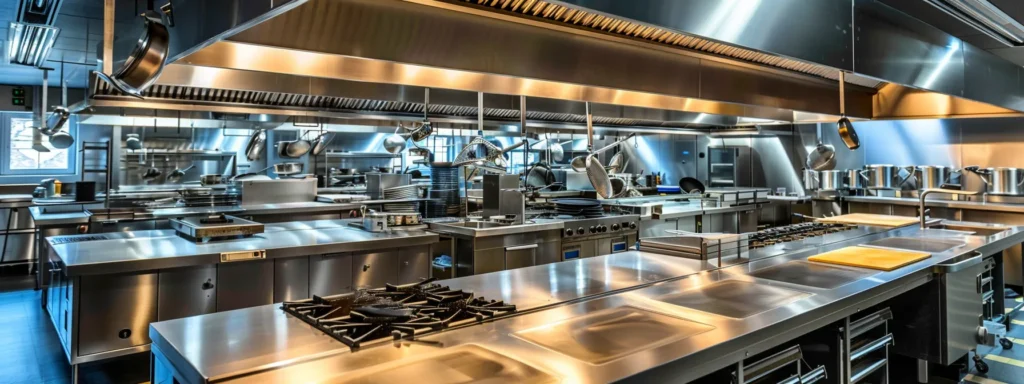
Launching a restaurant requires meticulous planning and a keen eye for detail, particularly when outfitting the kitchen—a critical zone where meals are crafted and dreams take shape. The right equipment enhances the efficiency of kitchen operations and influences the quality of the food served. Restaurateurs must consider their specific culinary needs, seek out equipment that stands the test of time, and strike a delicate balance between cost and performance. Keep reading to uncover practical tips to guide you through the complex landscape of restaurant equipment procurement.
Assessing Your Kitchen’s Specific Needs
Chefs and managers must assess their kitchen requirements before investing in restaurant equipment. This involves understanding the dishes on the menu and anticipating preparation efforts. Knowing the volume of food that will pass through the kitchen daily impacts the type and size of equipment needed.
Space plays a crucial role in selecting the right restaurant supplies. Kitchens with limited square footage demand versatile, multi-functional appliances to maximize the available area. This will prevent a cramped work environment, which could hamper the staff’s efficiency and safety.
Additionally, the durability of restaurant equipment merits attention. Opting for high-quality, robust machines may represent a significant upfront investment but generally results in long-term savings. Durability will minimize repair costs and reduce the likelihood of operational disruptions due to equipment failures.
Energy efficiency should not be overlooked when sourcing restaurant equipment. Appliances that consume less energy contribute to lower utility bills and support sustainability initiatives. Energy-efficient equipment is cost-effective and aligns with the growing consumer demand for environmentally responsible businesses.
If you’re looking for a restaurant supply in your area, a quick online search for “restaurant supply Denver” can help you find local vendors and options. Establishing relationships with local suppliers can offer benefits such as personalized service, quicker access to parts or repairs, and insights into the latest kitchen trends and technologies.
Evaluating Quality and Durability

One of the biggest decisions when balancing quality with budget constraints is purchasing new or used equipment. New items generally come with manufacturer’s warranties and the assurance of no wear and tear, but they can also be a substantial financial outlay.
Used equipment is a practical solution for many restaurateurs, especially for items that do not suffer much from prior use, such as stainless steel worktables or dining furniture. However, when it comes to critical kitchen appliances like ovens or refrigerators, buying new might prevent future headaches caused by unexpected malfunctions of used items.
When inspecting used equipment, thoroughly evaluate its condition. Ask for maintenance records, check for signs of damage, and test the equipment if possible. Negotiating with the seller for a limited warranty period can also provide some safeguard against immediate failures. Making partnerships with reliable providers also implies having a trusted source for second-hand equipment that has been meticulously maintained.
Leasing equipment might be a more viable option for expensive or integral pieces. Leasing offers the advantage of lower initial costs. It often includes maintenance services, making it a flexible choice for new restaurants or those looking to revamp their kitchens without a substantial initial investment.
Balancing Budget and Efficiency
Selecting equipment that adheres to health and safety standards is not just a legal requirement but also an ethical obligation. Failure to comply with these regulations can result in penalties or, worse, endanger the welfare of your staff and patrons. It’s crucial to be well-informed about the codes that apply to your locale when picking out equipment for your establishment.
Food contact surfaces should be made from non-toxic, non-porous materials that are easy to clean. This helps prevent the growth of bacteria and cross-contamination. Additionally, the ergonomics of the equipment should be considered to ensure the safety and comfort of kitchen staff, potentially reducing the chance of workplace injuries.
Ventilation systems are another key element that must conform to strict standards. An efficient range hood doesn’t just remove heat and odors; it also lowers the risk of fire and helps to maintain good air quality in the kitchen. Periodic inspections and maintenance of these systems are critical to remain compliant with health and safety regulations.
Temperature control is another aspect that can easily be overlooked. Incorrect temperature settings or failing thermostats can quickly lead to spoiled ingredients and foodborne illnesses. Equipment must have precise temperature controls and be regularly monitored to ensure food is stored and cooked at the correct temperatures for safety.
Overall, carefully considering your kitchen’s specific needs, the durability and quality of equipment, and adherence to health and safety standards will ensure a well-equipped and efficient restaurant. By balancing these factors, you can make informed decisions that enhance your kitchen’s performance and contribute to your restaurant’s long-term success.
